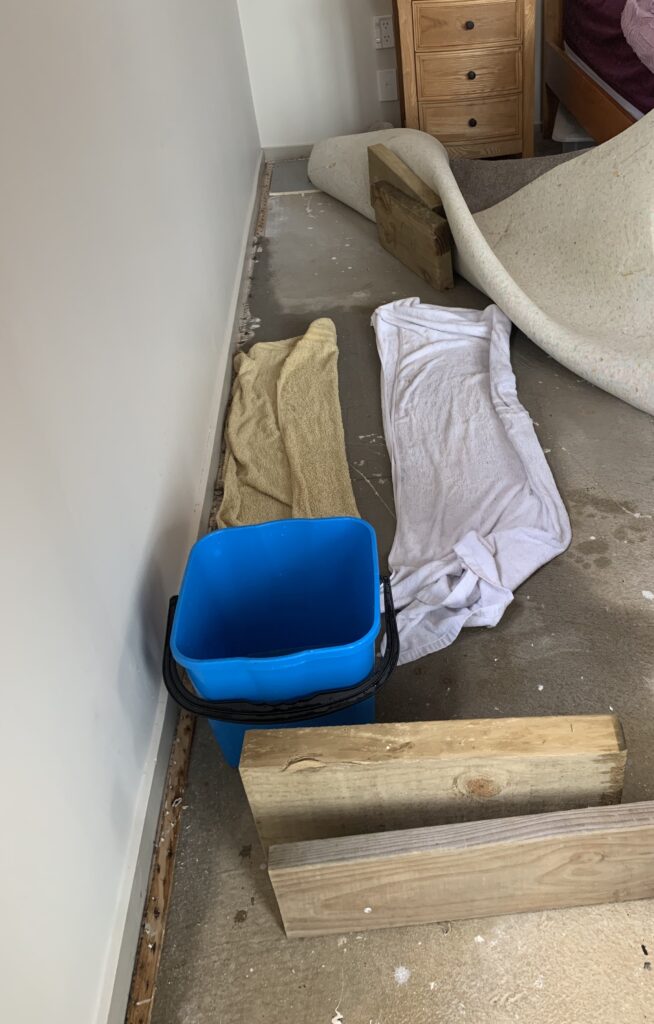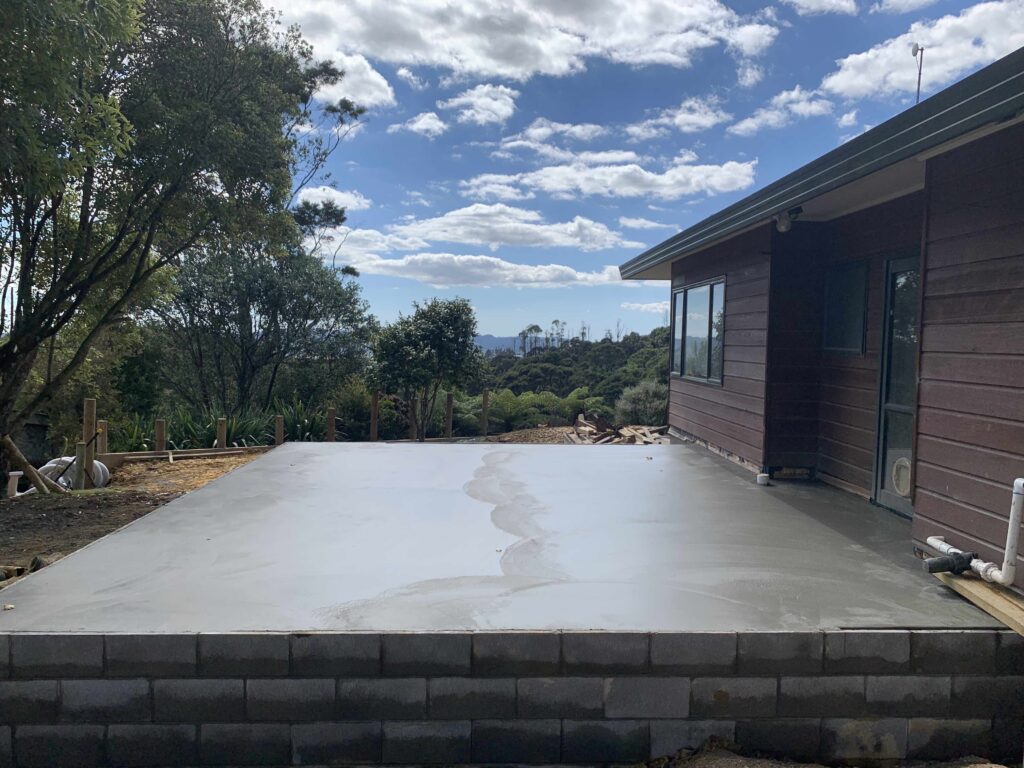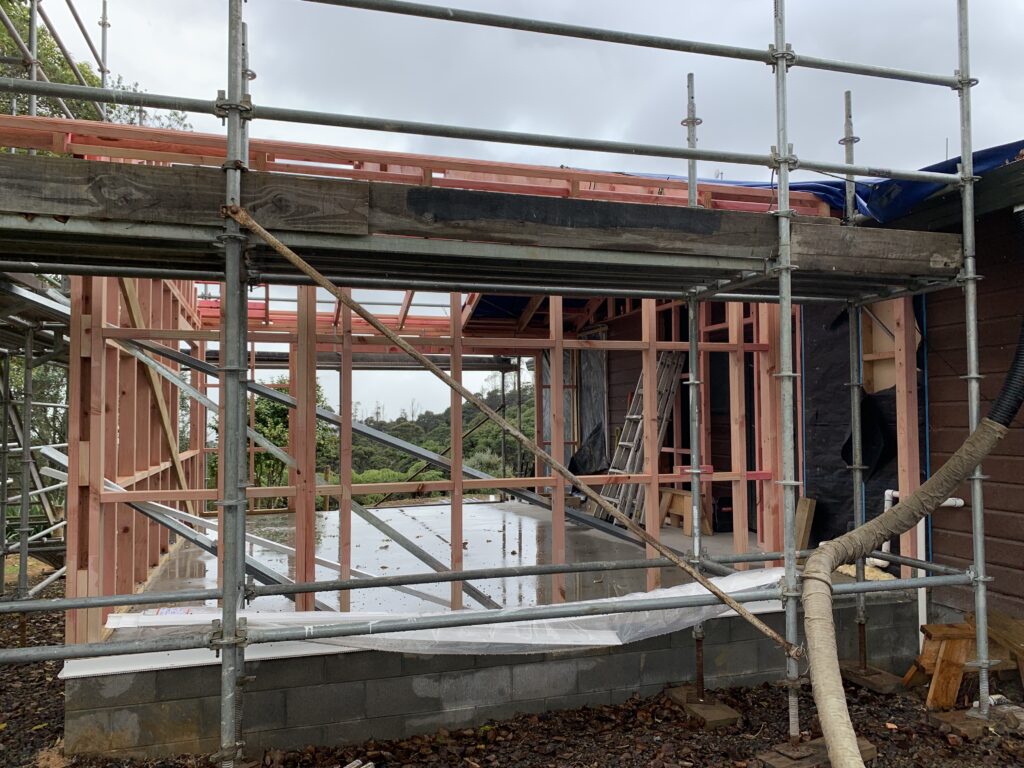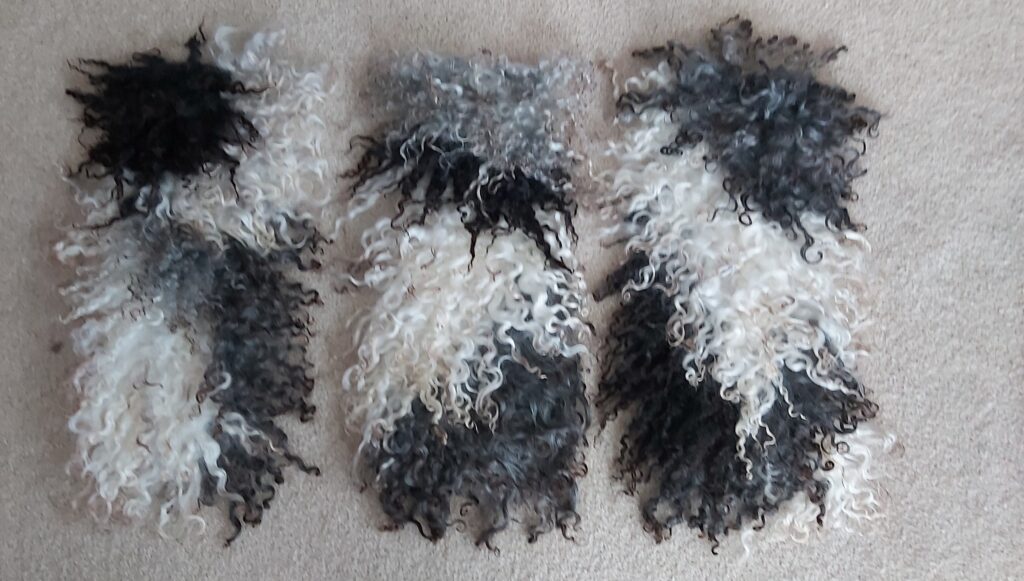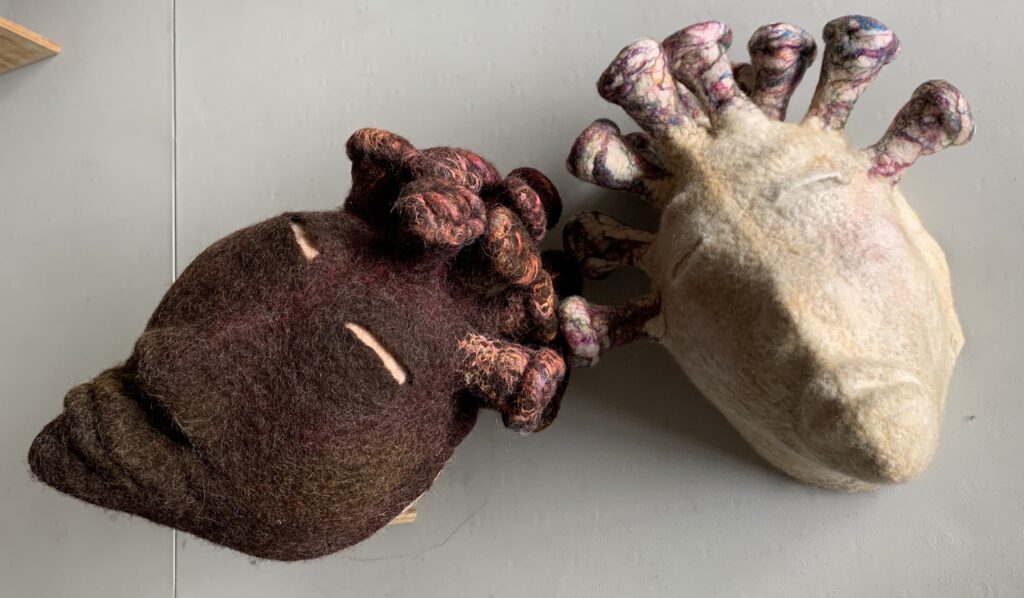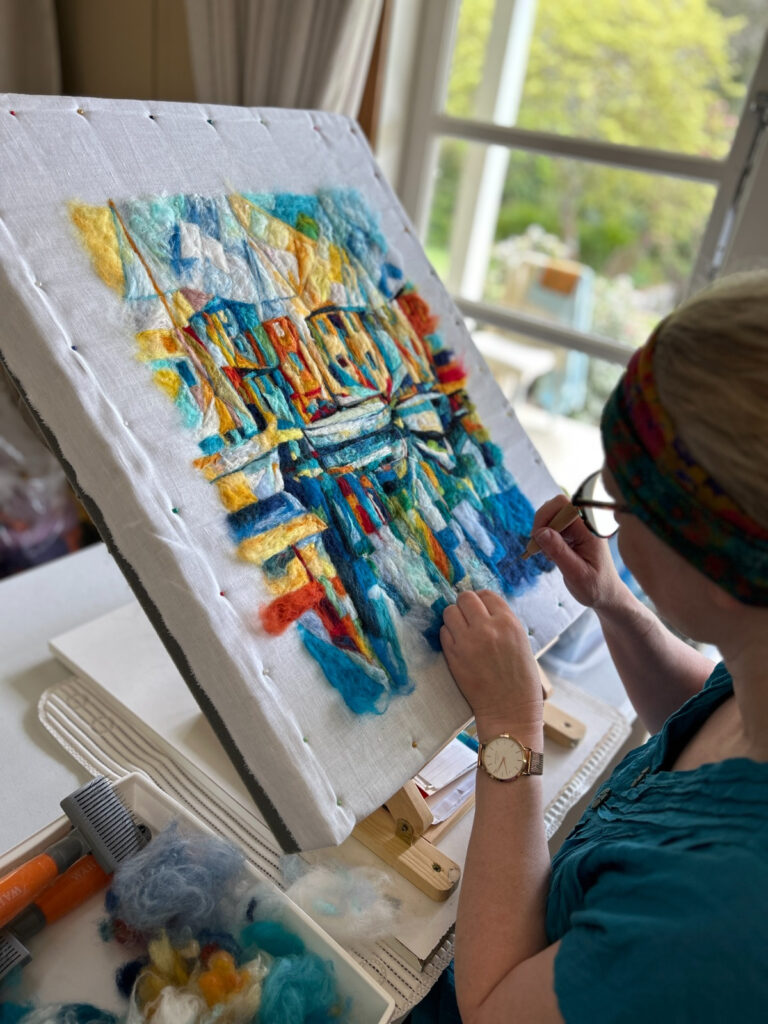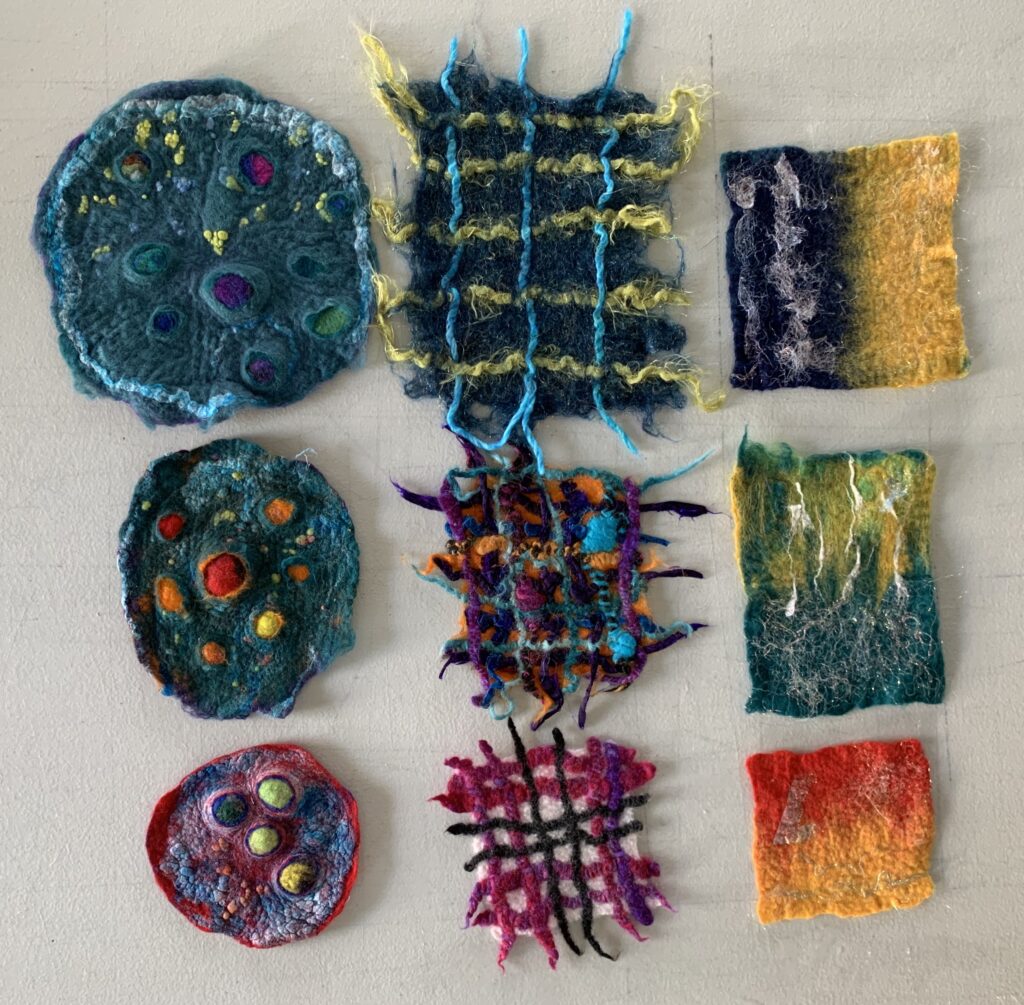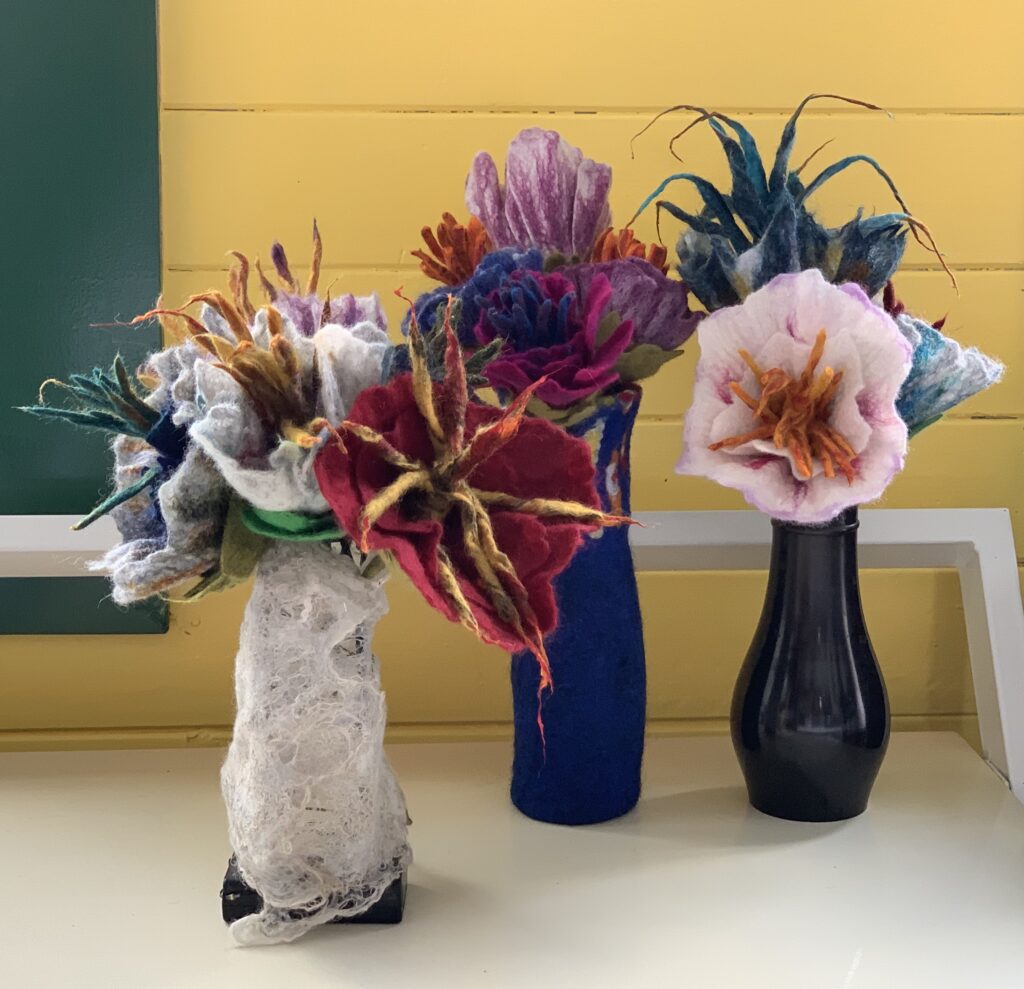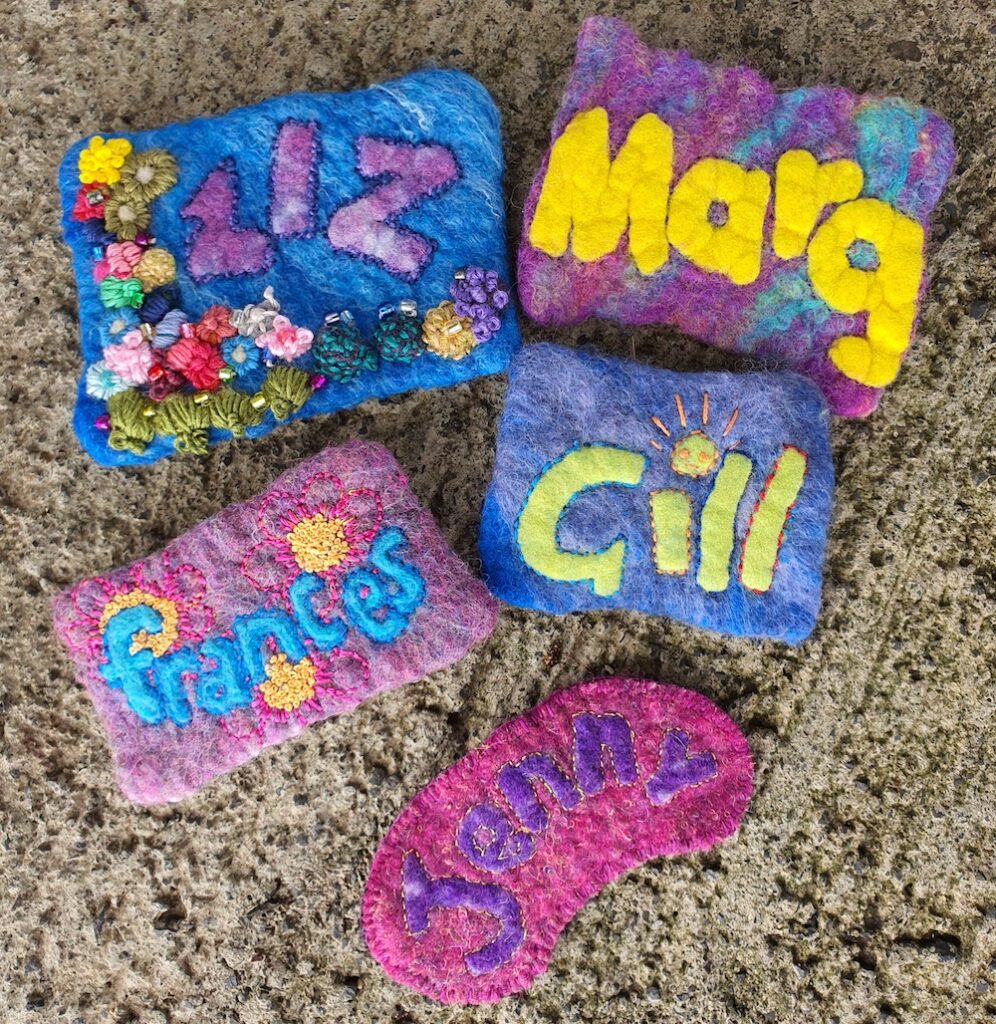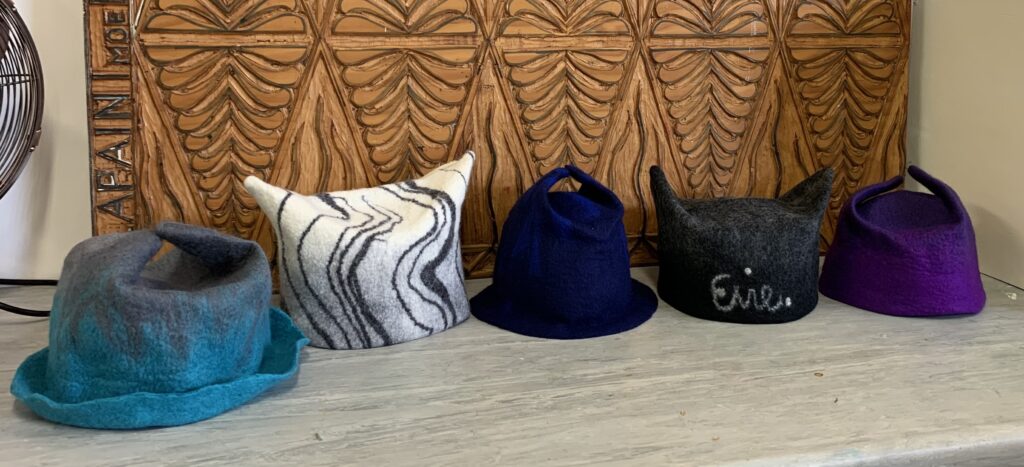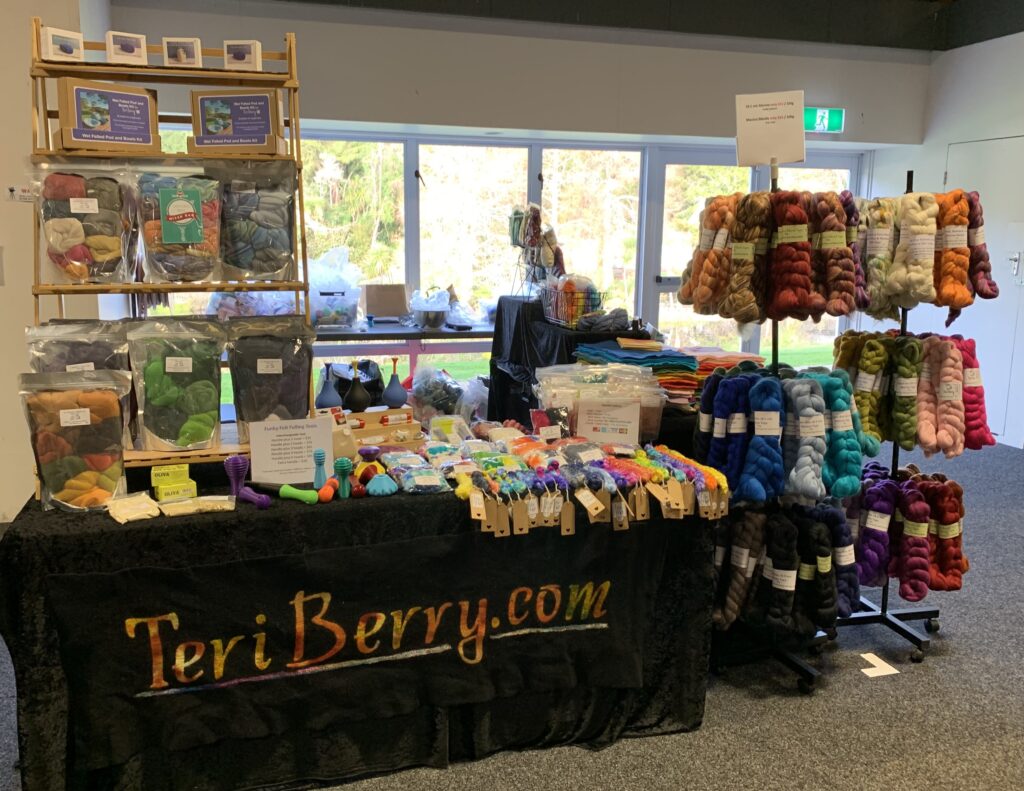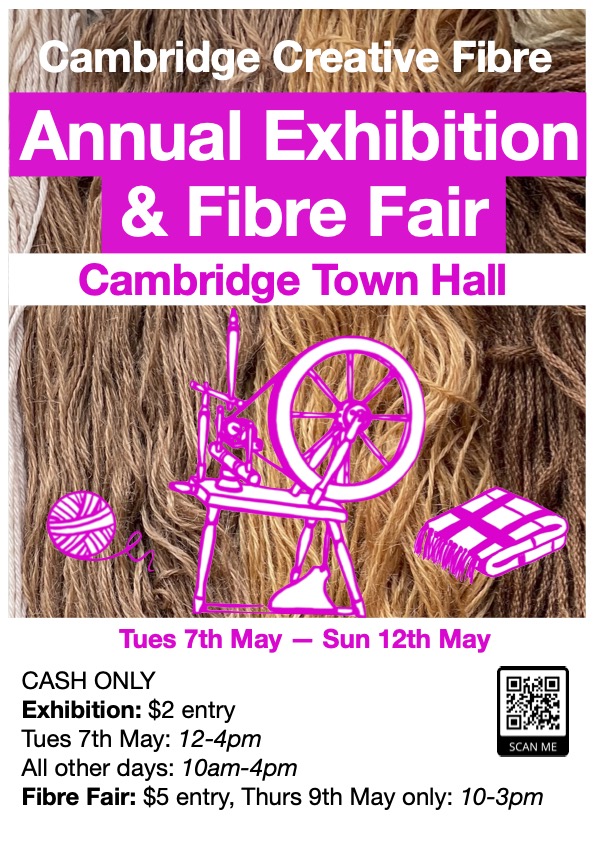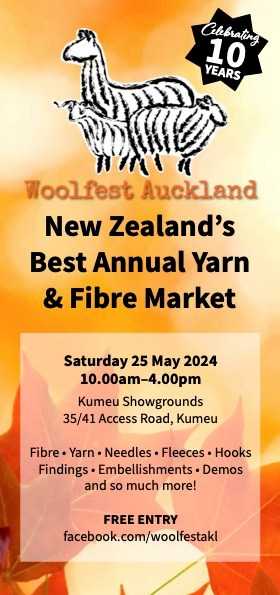I was surprised to discover this was the first group exhibition for Auckland Felters, this is such and active group full of very talented people it never occurred to me that I would be the first one crazy enough to suggest it.
For anyone thinking about getting a group of likeminded friends together and hiring a gallery space… Do it! This has been such a fun ride with the most wonderful group of people 🙂 It is quite a significant amount of work but with an enthusiastic group to spread the load it is perfectly achievable, even while working (more than) full time.
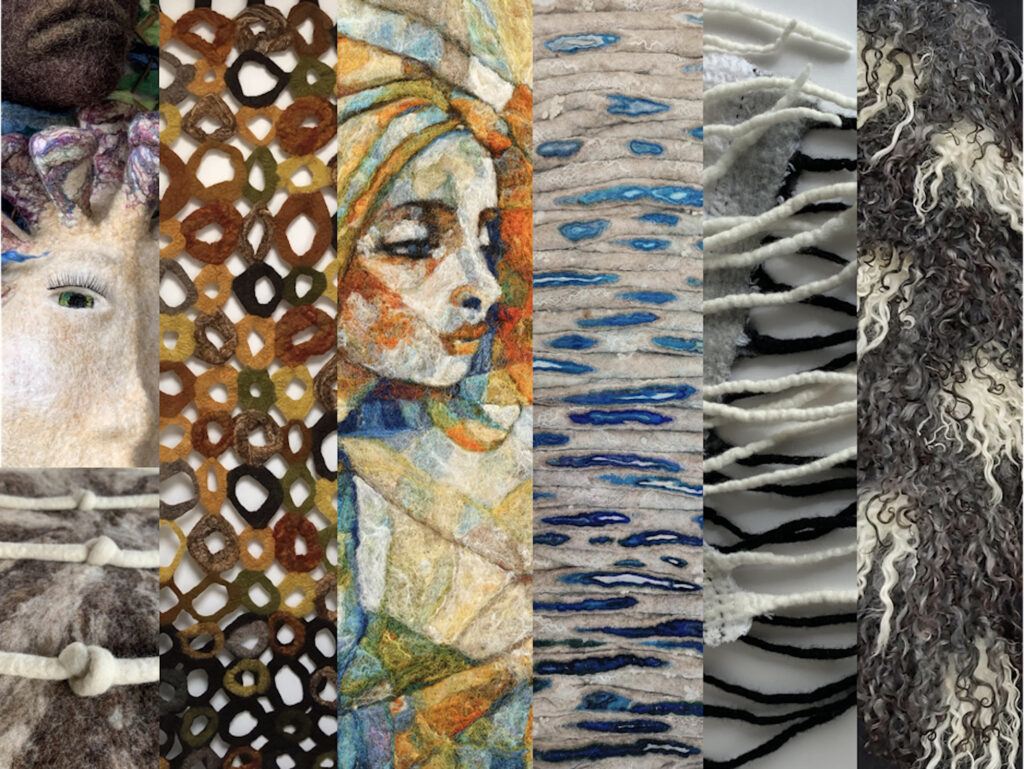
The first stage was to find out who might be interested and then get them together to decide on a title / theme for the exhibition. This we did over Zoom in July 2023. Armed with that information and some example photos of our work I set about applying to a gallery I know quite well from teaching in their workshop space. I am sure it also helped that the manager is a felt-maker too so was immediately supportive.
The title we settled on was – Resilience, the fibre that connects us. There was lots of brainstorming and different suggestions (I love working with creative people!) but in the end we agreed the title should be very flexible and open to interpretation in lots of different ways.
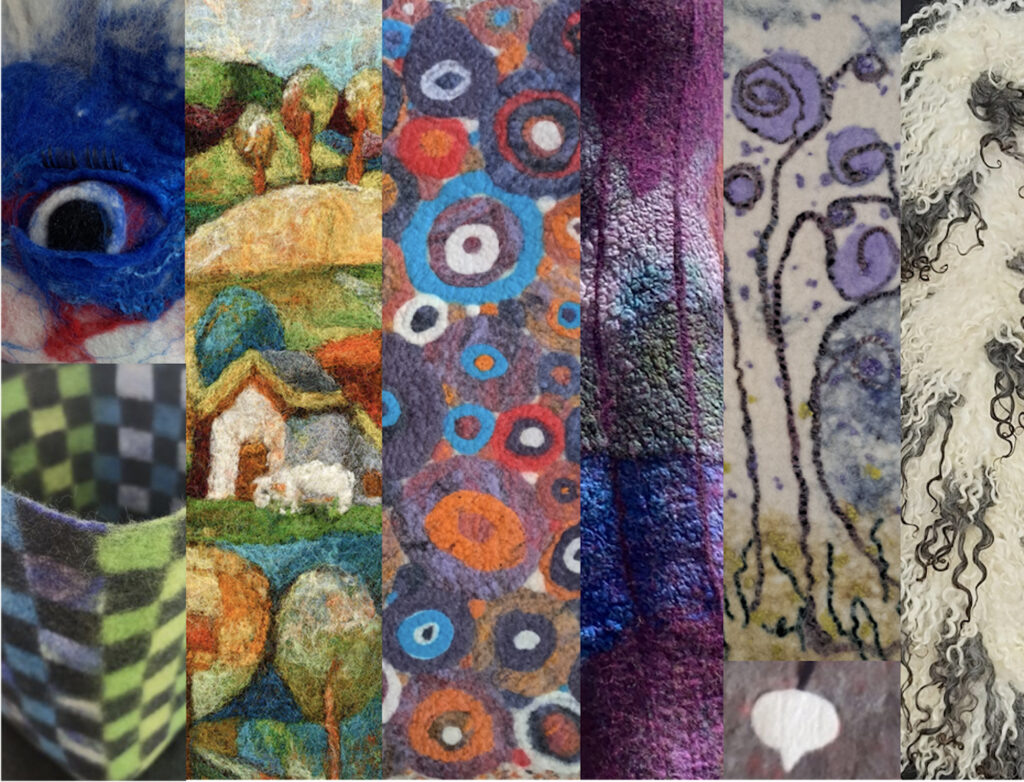
The next few months were pretty chilled as everyone worked on their pieces, just touching base at our Auckland Felters meetings on topics like different methods to hang or frame felt.
As the installation date approached, everyone became so quiet I started to worry only a couple of us would have something to hang and I would end up scratching around under the bed to find old pieces of work I could make fit the theme.
One month out from the installation and people started delivering their pieces and we began working on the advertising. Sarah Ritchie was incredible, preparing eye-catching posts for social media, a printed catalogue and posters for the gallery:
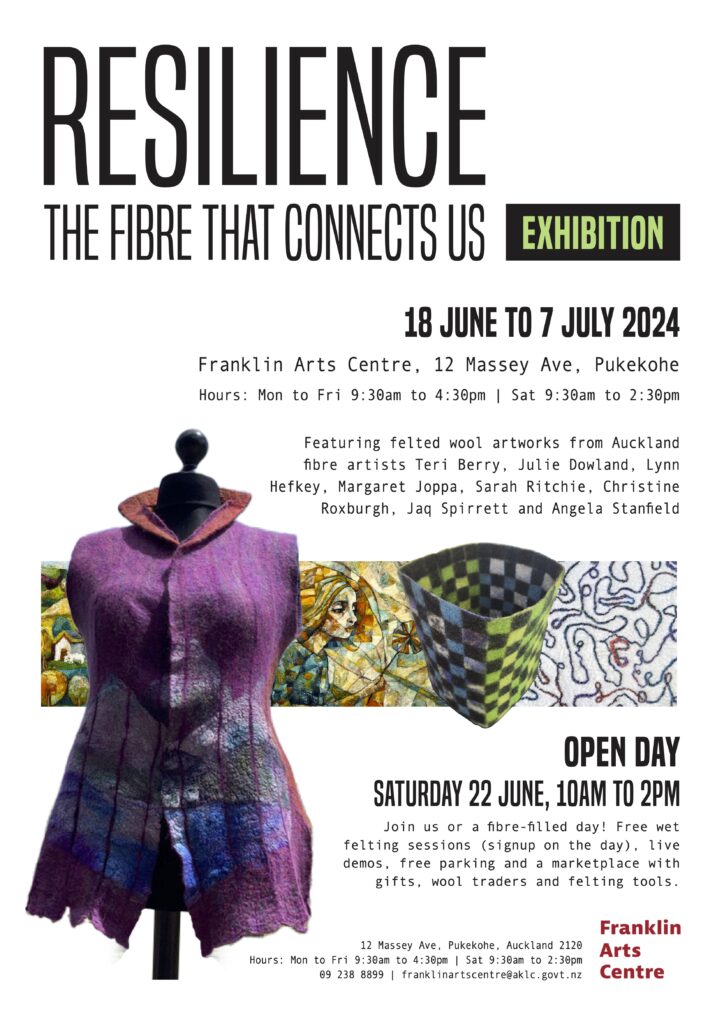
Advertising sorted, we turned our attention to making the opening event as enticing as we could, I’m sure we have all been to exhibition openings where there are drinks and nibbles, everyone wanders around chatting about the exhibits. All nice enough but I thought we could do better…
The gallery is conveniently located in a community centre, with the gallery, workshop area and a cafe on one side of a large atrium and the library on the other side. This is a great space for holding small indoor markets and attracts quite a lot of foot traffic, even before we turned up….
We had a selection of stalls selling felted goods, fibre and felting tools and equipment:
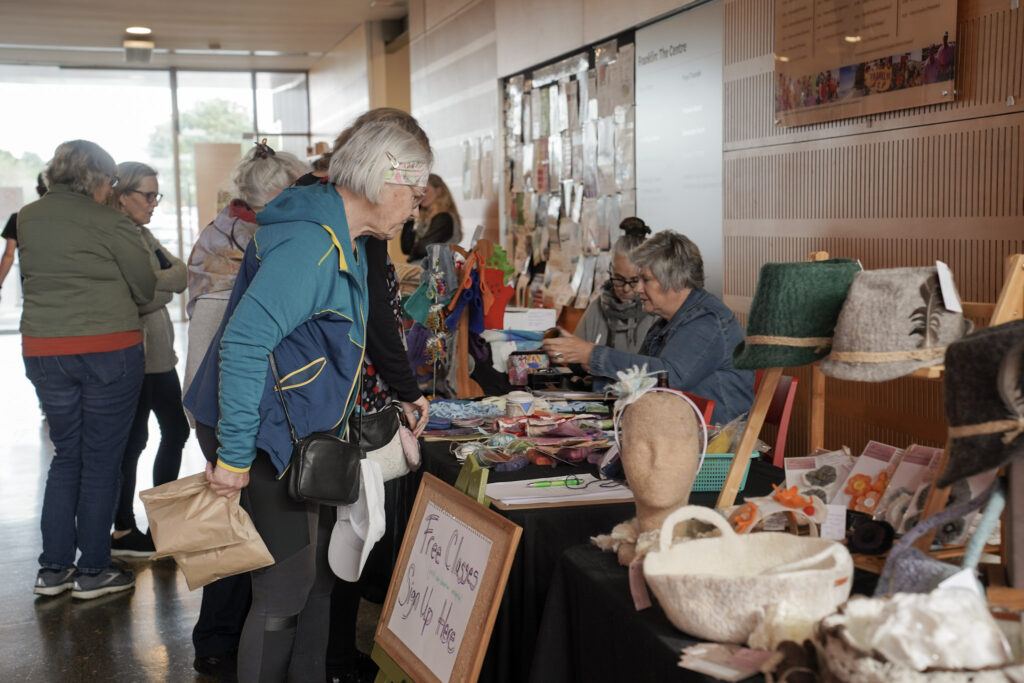
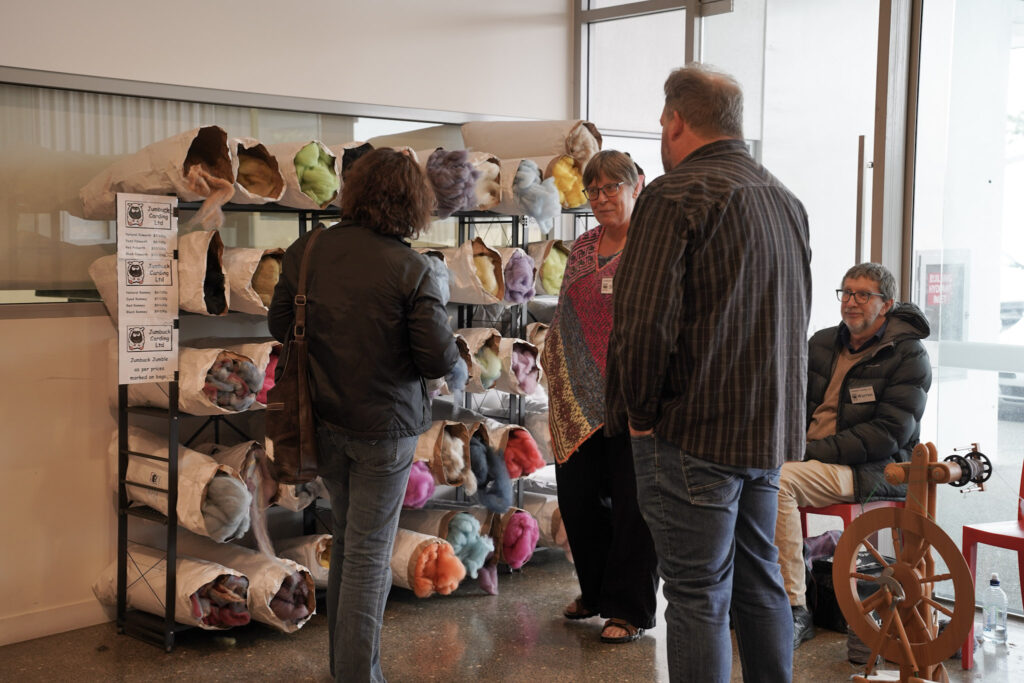
We offered four, have-a-go felting classes in the gallery’s workshop area, this is Lynn preparing for her felt beads class with me interrupting:
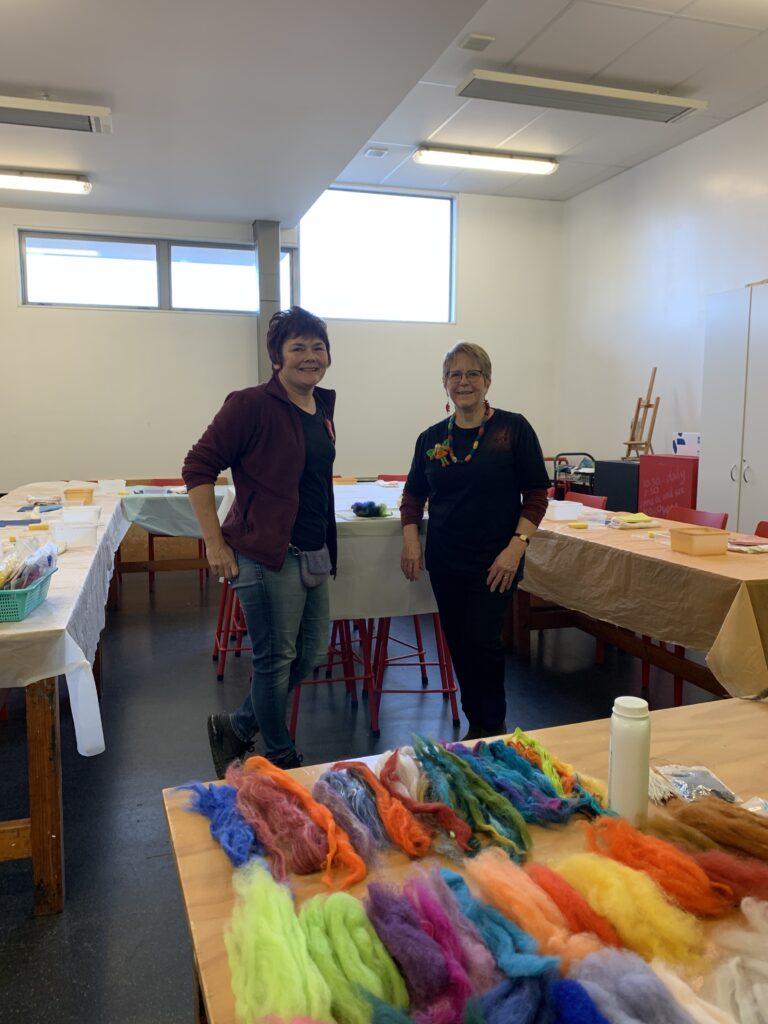
We had an amazing felting demo table, with members from Auckland Felters providing entertainment throughout our 4 hour event:
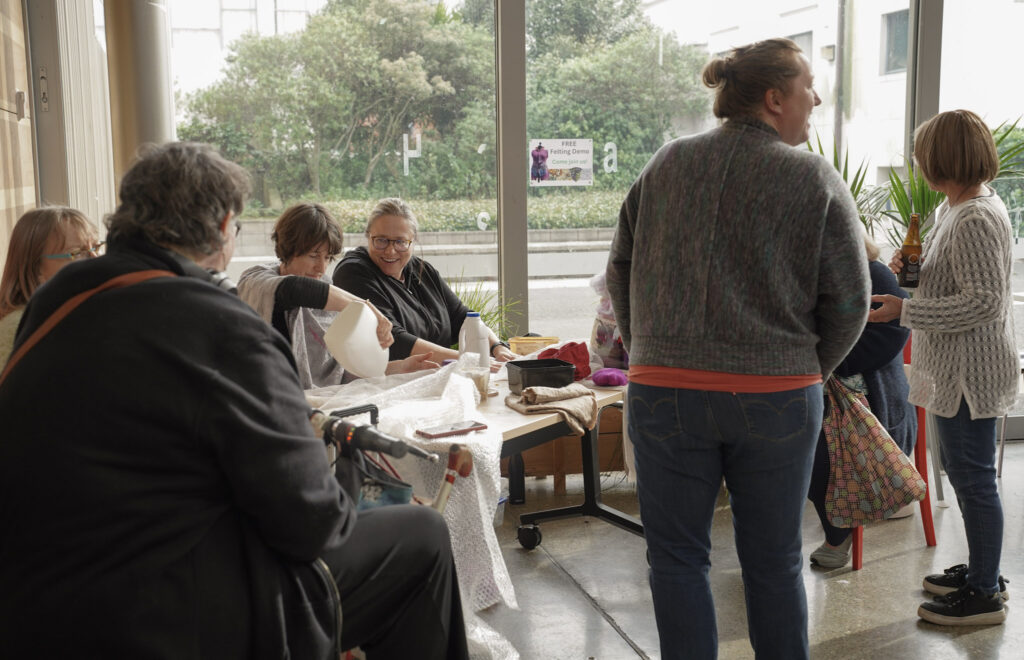
Daniel, Angela’s son, and honorary Auckland Felter, blessed us with live music accompanied by his friend and teacher, Trish.
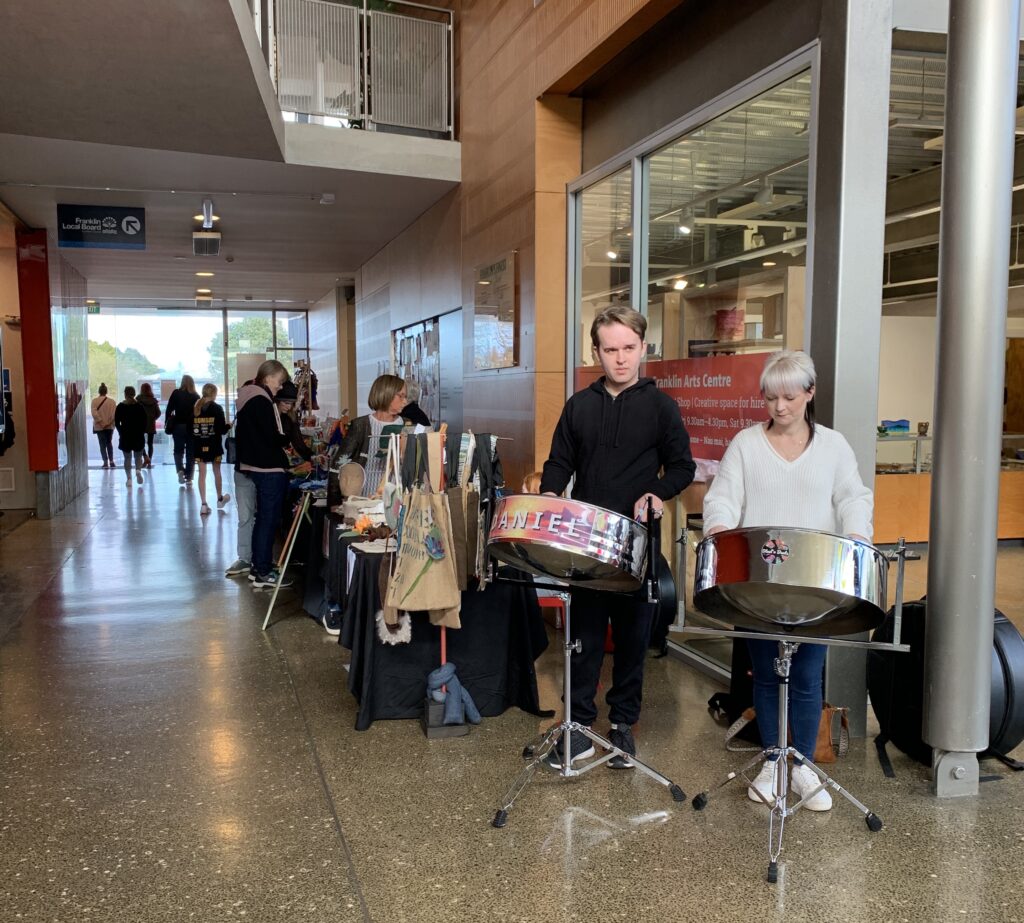
And of course there was the exhibition. We created an online catalogue with a description of each piece and the inspirations behind them, you can read it here.
If you are quick, you can still see all the wonderful pieces in person until 4pm on Monday 8th July. For everyone from further afield I videoed a short tour of the exhibition so you would not miss out. Enjoy!
One last thing…
My online classes are now open and accepting students until July 16th (if you are thinking about joining the concertina hat class I recommend registering ASAP if you need to buy / make a hat block so you are ready for the first felting tutorial on the 18th). Please click on each class for more information:

